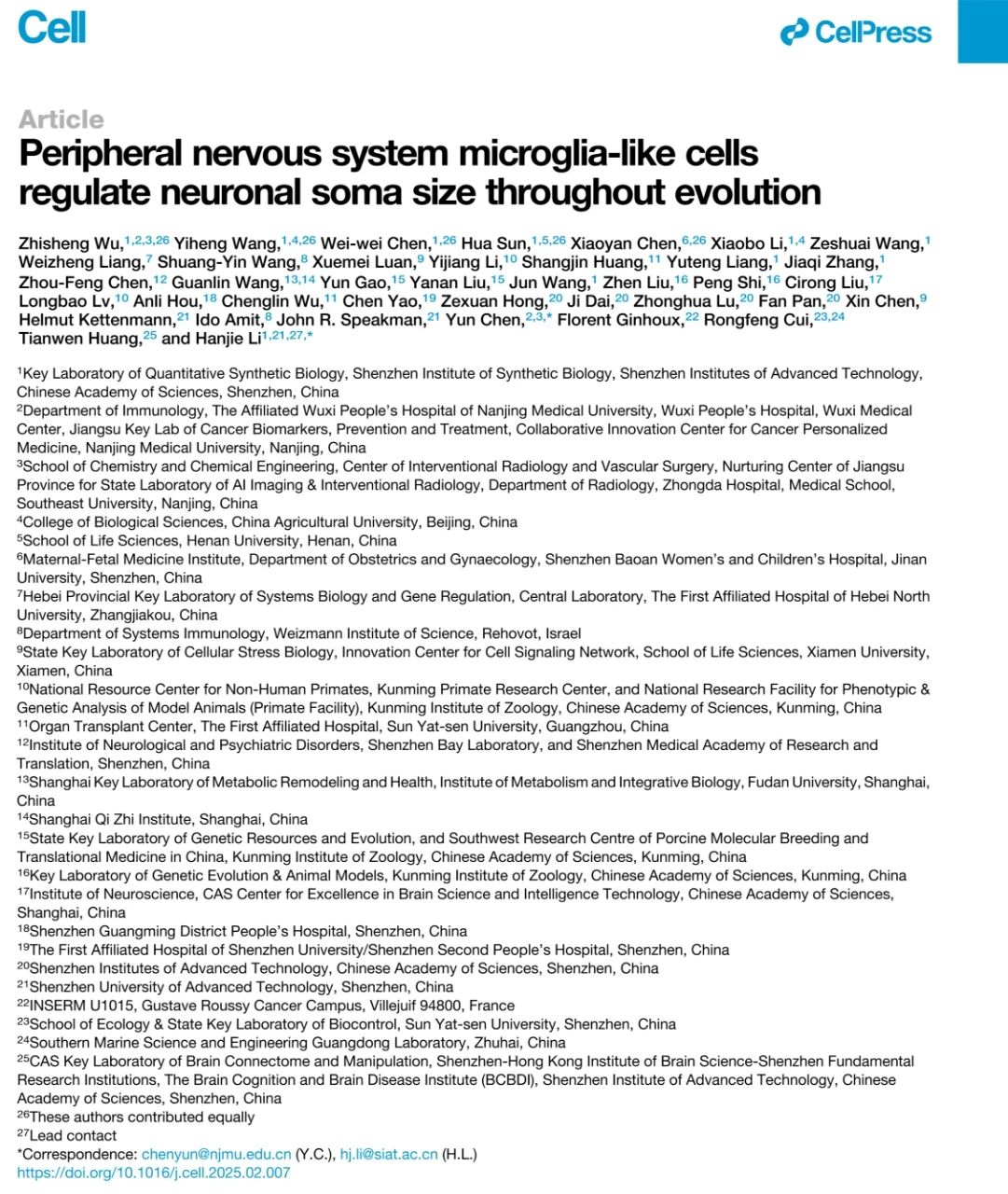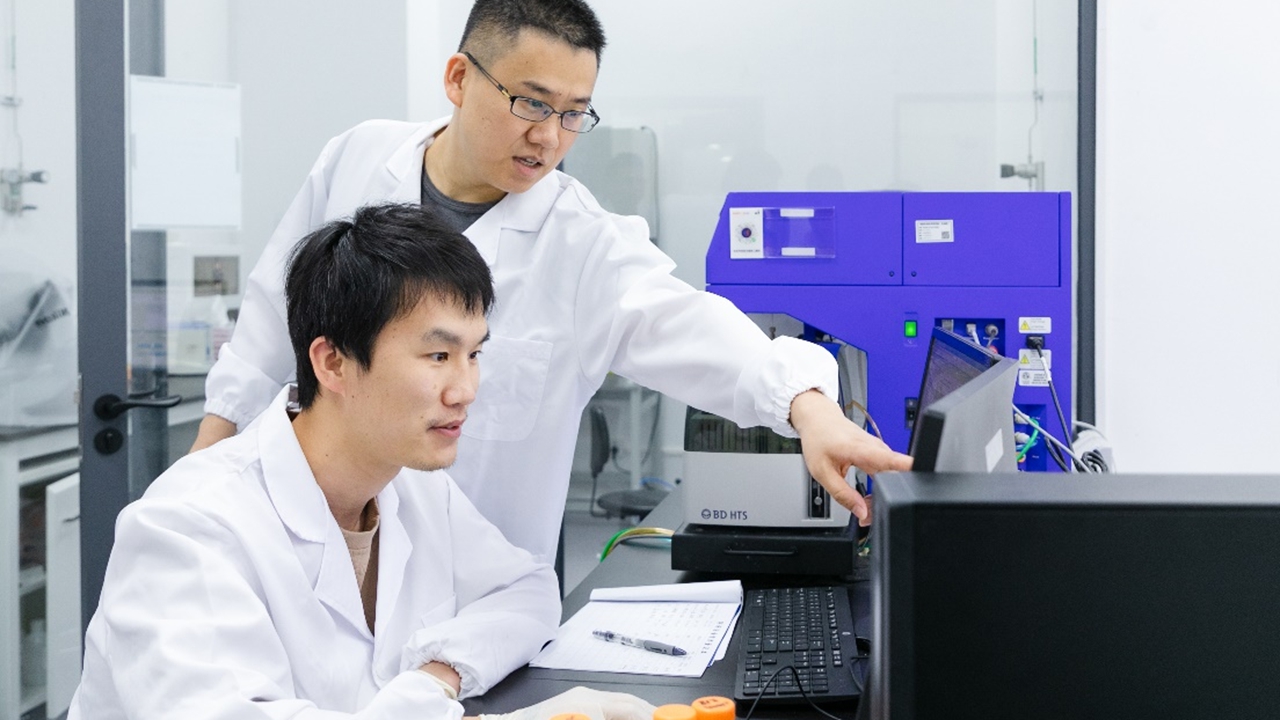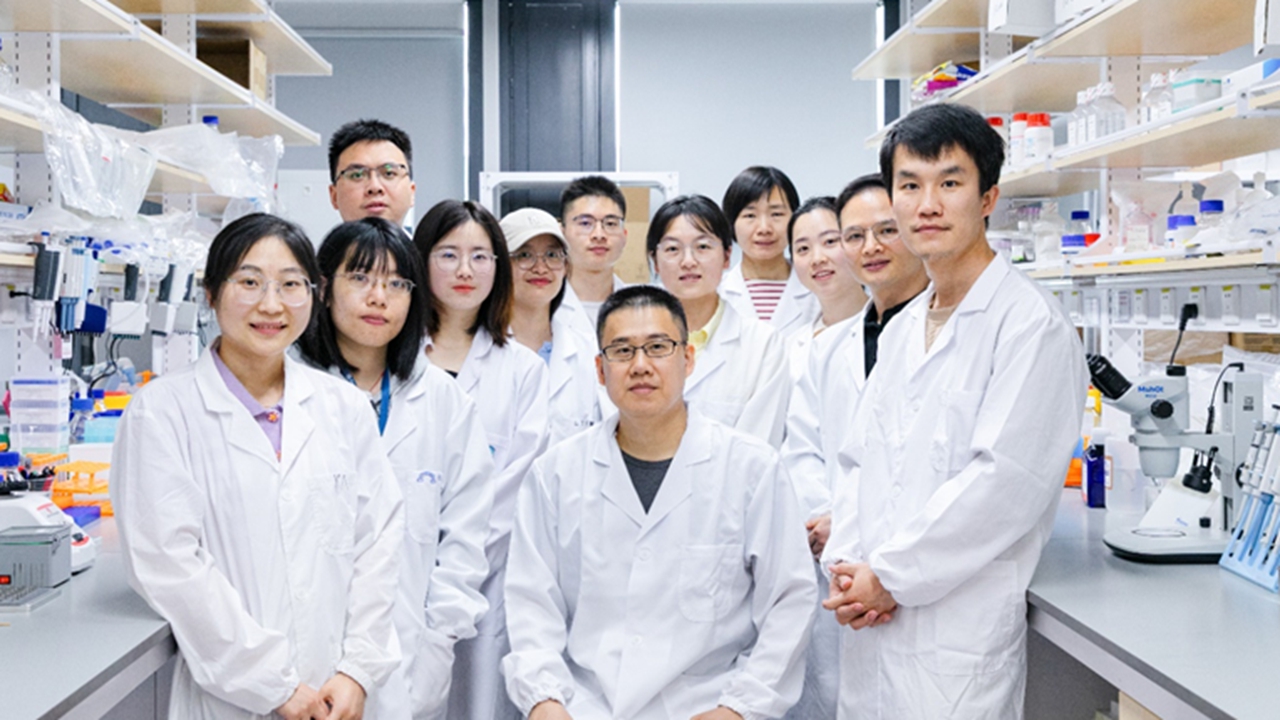SZ scientists confirm microglia in PNS
Writer: | Editor: Lin Qiuying | From: | Updated: 2025-04-09
Scientists in Shenzhen have, for the first time, confirmed the existence of microglia in the peripheral nervous system (PNS). This breakthrough provides novel insights into PNS development, opening new pathways for treating neurological diseases such as developmental disorders, nerve injury, abnormal pain, and viral infections affecting nerves.
The study, conducted by a research team at the Shenzhen Institutes of Advanced Technology (SIAT) under the Chinese Academy of Sciences (CAS), was published in the latest issue of Cell.
An international reviewer of the study commented, "This is a very important new discovery and a frameshift in our understanding. Prior to this, we assumed there were no microglia-like cells outside the central nervous system (CNS)."

The SIAT research team’s groundbreaking study on peripheral nervous system microglia is featured in the latest issue of Cell. cellpress.com
Immune cells, an essential part of the immune system, play significant roles in embryonic development, organ formation, maintaining body stability, and influencing disease occurrence and progression. Microglia, a subset of tissue-resident immune cells discovered in 1919, have been thought to exist solely within the CNS, scientists explained.
However, a 2023 study by the team led by researcher Li Hanjie, also published in Cell, discovered microglia in human fetal skin, testicles, and heart tissues.
"Initially, we observed microglia in non-CNS tissues but could not confirm their presence in the PNS. This uncertainty drove over a year of rigorous investigation," recalled Wu Zhisheng, the first author of the latest Cell paper.
 Wu Zhisheng (Front), first author of the Cell paper, and team leader Li Hanjie discuss experimental findings in their laboratory at SIAT. Photos courtesy of SIAT
Wu Zhisheng (Front), first author of the Cell paper, and team leader Li Hanjie discuss experimental findings in their laboratory at SIAT. Photos courtesy of SIAT
The team conducted experiments on diverse unconventional model animals, including humans, monkeys, and pigs, collecting biological samples from wild and farmed sources and developing a novel research framework. Their efforts conclusively verified the existence of PNS microglia.
The discovery may reshape our understanding of various PNS-related disorders. For instance, dysfunctions of these PNS microglia cells may contribute to congenital PNS defects during fetal development. It could provide new drug targets for treating PNS hereditary neurological diseases, said Li.

Members of the SIAT research team pose for a group photo.
In cases of PNS nerve injury or neurodegeneration, the activation of PNS microglia may help remove damaged tissues and encourage nerve regrowth. Additionally, during viral infections, they might protect neurons from pathogens.
In pain regulation, PNS microglia may respond to neuronal signals via releasing pain-causing molecules or secreting analgesic factors to modulate the pain symptoms in patients. This "double-edged sword" characteristic offers the possibility of precise intervention for pain management, Li added.